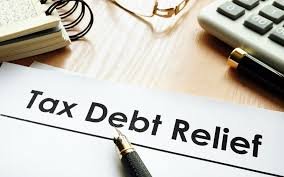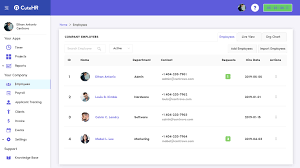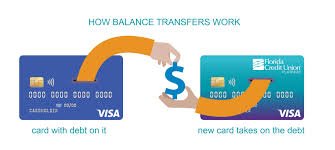Tax Debt Relief Program: Your Complete Guide to Financial Freedom

Managing tax obligations can be overwhelming, especially when debts accumulate. Whether due to late filings, unexpected financial hardship, or IRS penalties, individuals and businesses alike may find themselves searching for a solution. Fortunately, a tax debt relief program offers a structured pathway to financial recovery, helping taxpayers settle what they owe and avoid severe consequences.
Understanding how a tax debt relief program works is essential for anyone struggling with unpaid taxes. In this guide, we’ll break down the different types of relief options, who qualifies, and how to apply effectively—so you can take control of your financial future.
What Is a Tax Debt Relief Program?
A tax debt relief program is a legal process designed to help individuals and businesses manage and reduce their outstanding tax liabilities. Offered through the IRS or specialized tax relief companies, these programs allow taxpayers to settle their debts through negotiated terms, such as installment agreements, penalty abatement, or an offer in compromise.
For those under financial pressure, enrolling in a tax debt relief program can mean avoiding wage garnishments, tax liens, and other aggressive collection tactics used by the IRS.
Who Qualifies for Tax Debt Relief?
Not everyone qualifies for every form of relief. However, the IRS evaluates eligibility based on various factors such as:
-
Income level
-
Amount of tax owed
-
Financial hardship or inability to pay
-
Compliance with current tax filings
To apply for a tax debt relief program, you must be up to date with your current tax returns. This is a crucial first step that cannot be skipped.
Types of Tax Debt Relief Programs
There are several kinds of tax relief options available. Knowing which one fits your situation best can significantly improve your chances of success.
1. Installment Agreements
An installment agreement allows you to pay off your tax debt over time in manageable monthly payments. This is one of the most commonly approved tax debt relief program options and is suitable for individuals who owe less than $50,000.
2. Offer in Compromise (OIC)
This allows taxpayers to settle their debt for less than the total amount owed if they can prove that full payment would create financial hardship. The IRS carefully assesses the applicant’s ability to pay, income, expenses, and asset equity before approving an OIC.
3. Currently Not Collectible Status
When someone cannot afford to pay their tax debt due to extreme hardship, the IRS may grant a temporary status called “Currently Not Collectible.” While interest still accrues, the IRS halts collection efforts, giving the taxpayer time to improve their financial situation.
4. Penalty Abatement
If your tax issues stem from reasonable causes like illness, a natural disaster, or unavoidable events, you may qualify for a penalty waiver. This tax debt relief program focuses on removing or reducing penalties rather than the total owed tax.
5. Innocent Spouse Relief
If your spouse or ex-spouse improperly reported income or claimed incorrect deductions on your joint tax return, this program can relieve you from responsibility. It’s a specialized tax debt relief program that protects you from the financial consequences of someone else’s mistake.
How to Apply for a Tax Debt Relief Program
Applying for a tax debt relief program involves a series of structured steps. Here’s what to expect:
-
Assess Your Tax Situation: Review the total amount owed and make sure all previous tax returns are filed.
-
Choose the Right Program: Evaluate which relief option best fits your financial circumstances.
-
Gather Documentation: This includes income statements, expense breakdowns, and asset valuations.
-
Submit IRS Forms: Depending on the program, you’ll need specific IRS forms like 433-A (Collection Information Statement) or Form 656 (Offer in Compromise).
-
Wait for IRS Review: Approval can take weeks or months depending on the complexity of your case.
Working with a certified tax professional can make the application process smoother and increase your likelihood of approval.
Benefits of Using a Tax Debt Relief Program
Enrolling in a tax debt relief program provides more than just peace of mind. Here are the tangible benefits:
-
Stops IRS collection actions
-
Prevents property liens and wage garnishment
-
May reduce your total tax liability
-
Offers structured payment terms that fit your budget
-
Helps rebuild financial stability
Transitioning out of tax debt not only improves your financial health but can also reduce emotional stress and anxiety.
Should You Use a Tax Relief Company?
While it’s possible to navigate IRS programs on your own, many taxpayers prefer hiring a tax relief company or an enrolled agent. These professionals specialize in negotiating with the IRS and can guide you through the nuances of each tax debt relief program.
However, it’s essential to choose a reputable service provider. Look for:
-
Accreditation by the Better Business Bureau
-
Positive client testimonials
-
Transparent pricing
-
Licensed tax professionals (CPAs, Enrolled Agents, or Tax Attorneys)
Avoid companies that guarantee IRS acceptance or promise immediate results without evaluating your situation thoroughly.
Long-Term Tax Management Tips
After resolving your debt through a tax debt relief program, staying compliant is critical. Here are some long-term strategies:
-
Always file your taxes on time, even if you can’t pay immediately
-
Set aside a portion of your income for quarterly tax payments (especially if self-employed)
-
Monitor your tax records and notices regularly
-
Consult a tax advisor annually
Implementing these habits reduces the risk of future tax issues and keeps your financial record clean.
Final Thoughts
If you’re drowning in tax debt, you’re not alone—and you do have options. A tax debt relief program is not a quick fix, but it is a powerful tool to help you regain control. Whether it’s through a structured installment plan, a negotiated settlement, or temporary hardship status, there’s a path forward.
Take the first step by assessing your financial situation and exploring the program that fits your needs best. Whether you do it yourself or work with a professional, the goal remains the same: to resolve your tax debt and secure your financial future.




